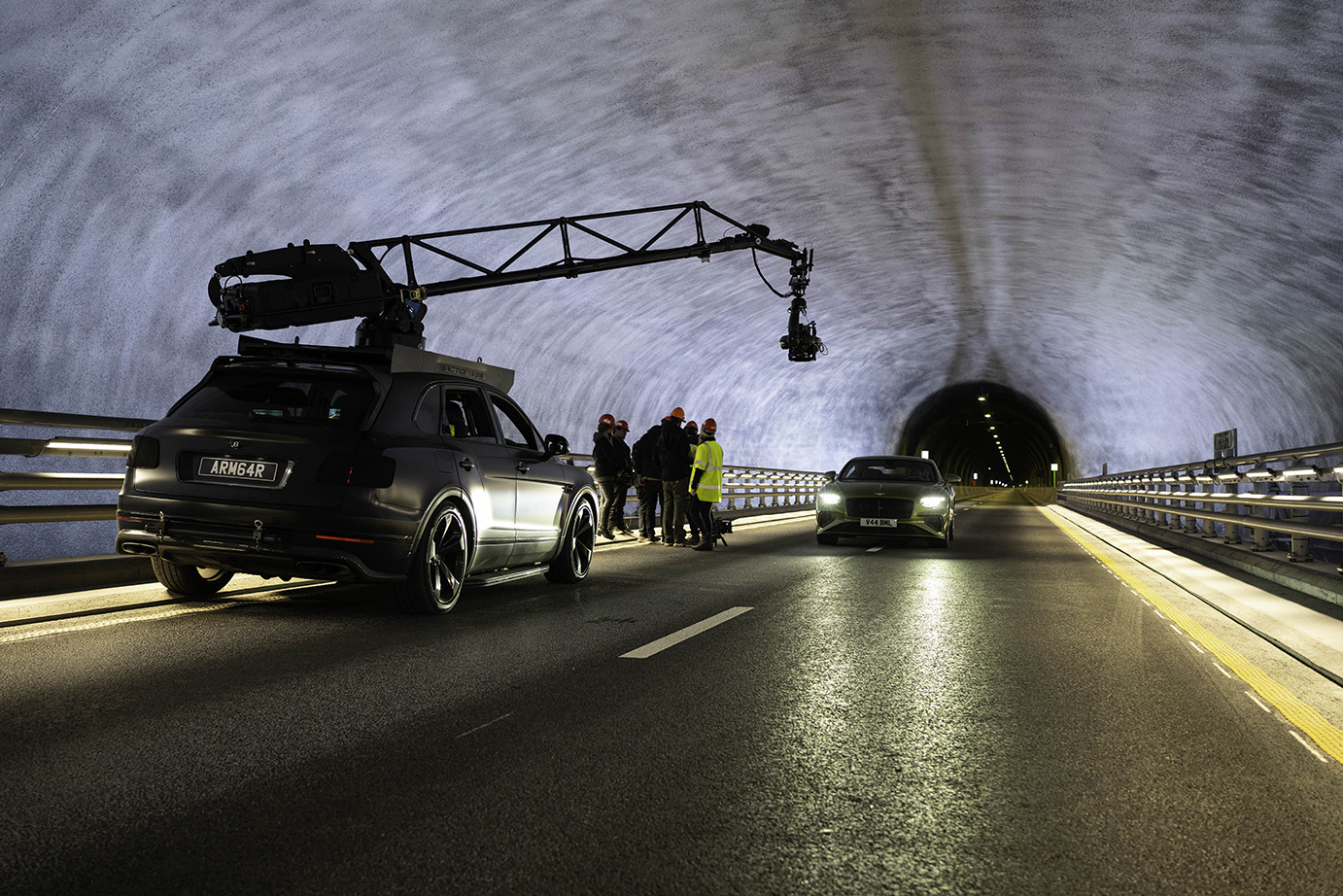Bentley’s fourth-generation Continental GT Speed makes its global public debut at the Goodwood Festival of Speed this week. Recently, the car claims an unofficial ‘Underwater Speed Record,’ believed to be the fastest a car has traveled through a tunnel. The vehicle, capable of reaching 208 mph (335 km/h), is presented in both coupe and convertible forms and runs the Goodwood Hill Climb twice daily from Thursday to Sunday.
In addition to the two Continental GT Speed cars participating in the Hill Climb, a third vehicle is showcased in a unique display celebrating the underwater speed record. This display, named ‘FOShtank,’ is a modified version of Bentley’s glass ‘Toy Box’ display units from its Dream Factory campus in Crewe, England. The modification includes a custom-built fish tank, playing on the underwater theme.
The Tourmaline Green Continental GT Speed is exhibited behind a three-tonne fish tank containing 1,400 liters of water and 30 goldfish, including Shubunkins. The two tanks together weigh more than three tonnes when filled, with the water held back by 80 mm thick acrylic sheets. The tanks are flow-rated and filtered to maintain clean water, and an on-site aquarium specialist cares for the fish throughout the Festival of Speed. The display’s back wall features a large outdoor LED screen showing the Underwater Speed Record launch film and a behind-the-scenes look at how the record is achieved.
Behind The Scenes
On April 18, the new Continental GT Speed reached its top speed in the Ryfylke tunnel in Norway, the longest road tunnel and the deepest subsea tunnel in the world, with a lowest point of 292 meters below sea level. Powered by Bentley’s Ultra Performance Hybrid electrocharged powertrain, the car effortlessly delivered 782 PS and 1000 Nm, running on Coryton’s SUSTAIN second-generation renewable biofuel and a hybrid battery charged from Bentley’s solar panel array.

This new powertrain provides exceptional performance, boasting more horsepower and torque than the previous W12 engine, while significantly reducing CO2 emissions to 29 g/km. This combination offers a wide range of driving capabilities, from high-speed performance to quiet electric luxury.
Thirteen months of planning and preparation were required for the high-speed tunnel run. While the Continental GT Speed can reach its top speed with only tire pressure adjustments, the confined tunnel environment required extra precautions.
Choosing the right tunnel was crucial. The Ryfylke Tunnel, near Stavanger, Norway, was selected for its straight, smooth, and lengthy characteristics. Bentley received support from the Norwegian highways authority (Statens Vegvesen) and the local Stavanger police to secure the tunnel and obtain permits to exceed the speed limit.
Simulations using Computational Fluid Dynamics showed that aerodynamic drag would be 11 percent higher in the tunnel. The car’s aerodynamic loadings were also influenced by shock waves and wake from the tunnel walls, which meant Bentley’s engineers had to evaluate unusual forces on the car’s panels. The simulations underscored the importance of keeping the car centered in the tunnel to avoid suction towards the walls.
For the run, the Vmax car was specially prepared with a roll cage and bucket seats and fitted with 22” Pirelli tires that were x-rayed for inconsistencies. Former British Rally champion Mark Higgins, who holds the Isle of Man TT lap record, drove the car. The top speed runs took place at 1:00 AM local time to minimize traffic disruption, with vehicles rerouted to the spare tunnel. Despite the increased drag, the Continental GT Speed accelerated from 0 to 335 km/h in 33 seconds, maintaining top speed as needed for the film directed by Jon Richards, formerly of Top Gear.
Discover more from SNAP TASTE
Subscribe to get the latest posts sent to your email.


